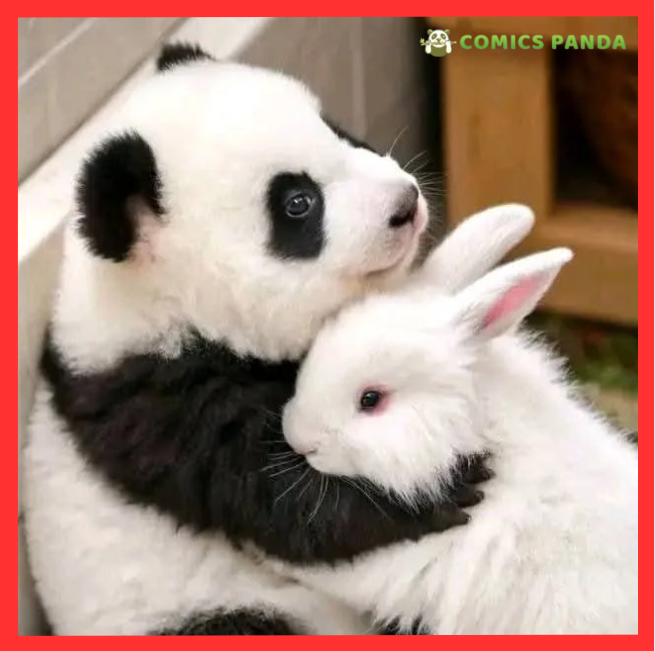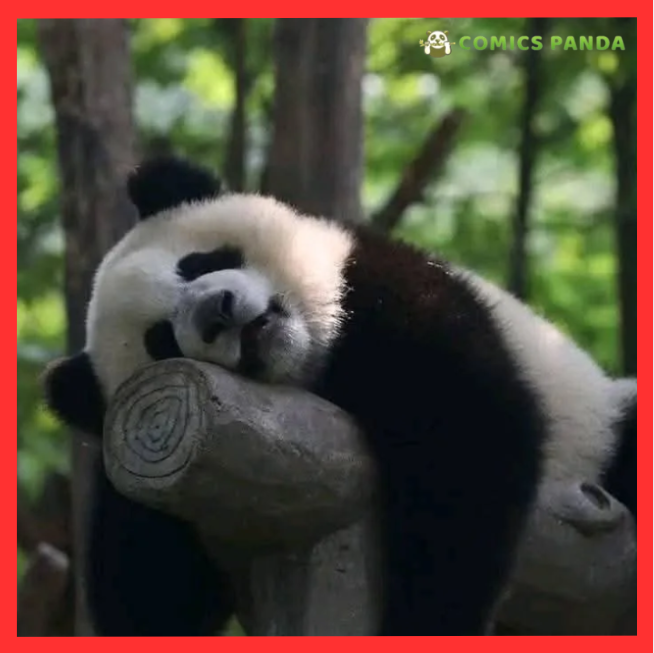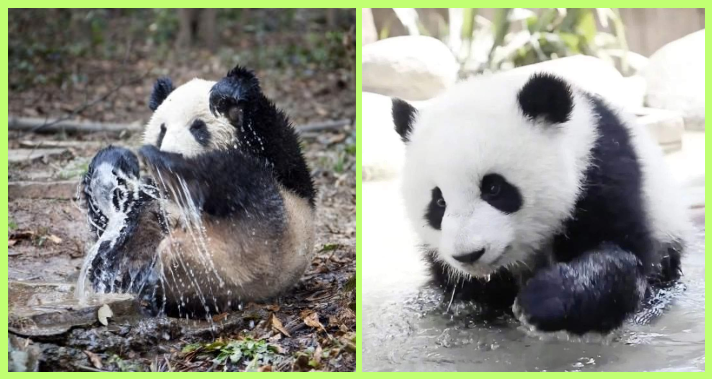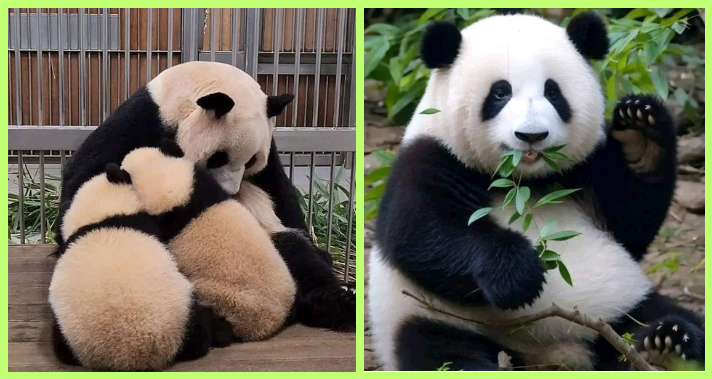Bamboo is the main source of food panda but it is not easy to digest it. Pandas are well known for their affinity to the bamboo. They spend a lot of time chewing its leaves, stems and shoots for many hours a day. Most animals cannot live on bamboo alone, but the pandas do. This leads us to wonder what’s going on in the panda’s body all the time it digests something like bamboo all day. The answer to that can be found in the way their teeth are uniquely structured so that they can chew through tougher materials and have a digestive system that works especially hard even if it is not designed for a plant diet. This blog introduces, in simple language, the solar process stemmed from the difficulty of panda’s body.
Panda Digests Bamboo All Day
Bamboo has low nutritional and energy values. This means that pandas have to eat a large amount in order to obtain enough nutrition to survive. A panda may eat half the day consuming many kilograms of bamboo. Their body needs constant energy and as this requires very little energy from bamboo, so the pandas need to keep eating to survive. This is why their stomachs hardly rest. The process of bamboo digestion begins from the mouth. Panda teeth are powerful and broad, especially the ones in the back. These teeth are made for crushing a hard-bamboo into small pieces. Their jaws are strong and strong enough to be able to bite through thick bamboo stems.
It is important to chew bamboo because this breaks it into small pieces and mixes it with saliva. Saliva contributes to the softness of the bamboo, making it easier for the rest of the digestive system to cope with it. Without proper chewing, the bamboo would be too tough to digest in the first place. After chewing the bamboo then travels down the panda’s throat and enter into the stomach. The stomach produces acids which aid in the breakdown of foods. However, since pandas have a stomach like the meat-eating animals, it is not ideal in breaking plants. Even then the work of the stomach is hard and tries to dissolve as much bamboo as possible. The acids have their effect on the soft parts like leaves and shoots whereas the hard fibers of bamboo can’t be broken down here very easily. This is the reason why much of the digestion work is done further down in the intestines.
#1. Four pandas look so cute in blankets

#2. Panda have best friendship with rabbit

The small intestine is where most of the nutrients are absorbed by animals. In the case of pandas, this too occurs, but their bodily processes do not occur very efficiently due to their not being fully adapted for a plant-only diet. Enzymes in the small intestine attempt to digest the bamboo to produce nutrients (such as protein and carbohydrates). However, bamboo is comprised of a material called cellulose and that is very hard to digest. Many plant eating animals have special bacteria in their stomachs in an attempt to digest the cellulose. Panda has some bacteria in its bowels, but not enough to help the panda digest the bamboo entirely. Because of this, a large percentage of bamboo gets through the small intestine to be completely absorbed.
#3. I want just to order

#4. Baby panda also have strong paws

After passing the small intestine the bamboo enters the large intestine. Here it is where water is absorbed from the remainder. The large intestine acts like a filter and removes the water so the panda is not losing too much water in its waste. Even by the end of all the digestion steps, much of the bamboo remains in the digestive system. The fibers and rough part of that helps to make the panda waste. Because panda diet consists of much of bamboo and little of what actually comes out is ration for intake, they produce heavy waste everyday. Their digestive system has to continue to work to expel this material and create space for more food.
#5. Pandas crowd having fun and get together

#6. After a very busy day, it’s relax time

Even though pandas are herbivores they have the carnivore digestive system. Their stomach and intestine is not long enough to digest the fibres of plants properly. True herbivores, cows had larger stomachs – called chambers – which help with the digestion process, also larger intestines to help with the digestion process. Panda lacks these sorts of features. This disparity causes pandas to repeatedly eat and embrace food storage as each time they chew only a small quantity of energy gets obtained from them. Their bodies imbibe what little nutrition is available and out them the rest passes out quickly. Panda have bacteria in their intestines that cause cattle to eat the bamboo a little better. These bacteria help to digest some of the cellulose into formable nutrients. However, the number of these bacteria is meager when compared to actual plant-eating animals.
#7. Great photography

Panda body has not evolved also to use bamboo in the most efficient way while thousands of years of eating them. This is the reason why digestion is still too difficult for them; and their bodies work really hard to process bamboo every day. Since little energy is provided by bamboo, the body of the pandas must wisely utilize the energy. This is the reason why pandas walk slowly and rest frequently. Their heart rate is peaceful and their muscles do not work too hard. They avoid doing activities that require too much energy. Their sedentary lifestyle is actually related to their digestion process. If they were more active their bodies would require more energy than bamboo was able to provide. By resting and conserving energy, pandas make sure the little nutrition they get from the bamboos are keeping them alive.
#8. Panda does not hesitate to climb trees

But even though their digestive system is not perfect for bamboo, other adaptations have taken place. Their molars are wide and also ideal for through grinding tough plants. Their jaws are strong and they are able to chew bamboo for hours. Their paws even have their own special bone that functions like a thumb in order for them to hold onto bamboo stems impulse. Their digestive system, unlike ours, is also very thick and although not the best for digestion, it is thick, protecting against sharp pieces of bamboo. Their stomach wall is a particularly muscular one, and their intestines is powerful and moves the food fast to prevent a blockage.
#9. That’s hilarious

The way in which panda guts down bamboo is a story of survival. Instead of changing their body completely to their food, they changed their behavior. They learned how to eat more, move less and depend on bamboo all the time. Their bodies do not store large amounts of fat and they need to eat every day in order to stay alive. They do not hibernate as their food does not provide them with sufficient energy for them to sleep through winter. Their survival depends on how well they are able to digest the bamboo to live another day. Inside a panda’s body, his digestion is anger and tight neck. Bamboo enters their mouth in the form of the tough plant and their teeth, stomach, and intestines operate hard on this plant to break it down.
#10. Baby panda is having fun with wooden block

A minimal amount of nutrients are absorbed and the balance is all waste. Even though their digestive system is more that of a meat eater, the pandas survive by eating large amounts of bamboo and conserving energy. Their digestion exhibits the strength of adaptation. Pandas did not change entirely to the food. Instead the found a way to live with what nature gave them. Their peaceful living, slow motion and powerful teeth all allow for this unique life of digestion. If you have enjoyed reading this blog then share it with people you know, also, visit our website for more stories about nature and wildlife.




